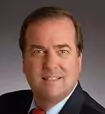Originally published in Risk Management Magazine (August 2014)
Insurance companies are having some success in court discouraging settlements—no matter how reasonable—between policyholders and lower-layer insurance companies. They are doing this by fighting access to excess insurance coverage unless the primary or lower-level policies have paid 100% of their liability. Some courts have ruled that if a lower-layer policy is settled for anything less than 100% of its policy limits, it never can be exhausted, and accordingly, liability never can attach to the excess policies lying above it. Another unfortunate example recently came to pass in New York state.
In Forest Laboratories, Inc. v. Arch Insurance Co., the New York Appellate Division, First Department, unanimously affirmed the trial court's decision to allow an excess insurance company to avoid coverage merely because the policyholder settled an underlying policy for less than 100% of policy limits, despite the fact that the policyholder made up the difference. In that case, the defense and partial settlement of an underlying securities fraud case was covered and partially paid for by the primary directors and officer liability insurance policy, as well as four other policies excess of the primary. Three additional insurance companies with policies in the uppermost excess layers denied coverage despite the acknowledgment of coverage by the underlying insurance companies. Ultimately, the policyholder settled for partial policy limits with all but the uppermost layer and "filled in the gaps" to ensure "actual payment" of the two settled underlying policies' limits.
The Appellate Division affirmed the trial court's decision with minimal analysis. An examination of the trial court's ruling, however, limits the breadth of the appellate decision. The trial court's decision held that where a policyholder settles with an underlying insurance company for less than full limits, even if a policyholder "filled in the gaps", underlying policies are not exhausted if the policy language requires that "insurers of the underlying policies shall have paid in legal currency the full amount of the underlying limit for such policy period."
Policyholders should be aware of this danger. These decisions permit excess insurance companies to overreach and contradict the basic ruling laid out in the majority Zeig rule. In that seminal 1928 United States Court of Appeals case, Zeig v. Mass. Bonding & Ins. Co., Judge August Hand held that an excess insurance company must pay if its layer of coverage has been pierced by sufficient liability, even if the policyholder has settled with its underlying insurance company for less than the underlying policy's limits and made up the difference.
In laying out its decision in Forest Laboratories, the trial court acknowledged the Zeig rule but declined to apply it due to the specific "incorporation" language at issue in that case. The actual policy language at issue merely required "actual payment of a covered claim pursuant to the terms and conditions of the underlying insurance thereunder." According to the trial court, that language alone lacked "clarity" and would have subjected it to the Zeig rule, if not for the incorporation of the "terms and conditions of the underlying insurance thereunder." The ultimate language relied upon in the decision was due to the incorporation of the hyper-specific wording found in the underlying policies. Thus, any court applying New York law should continue to apply the Zeig rule even where "actual payment" is required and confine any application of the Forrest Laboratories decision to instances where policy
Robert M. Horkovich is managing partner and shareholder in the New York office of Anderson Kill. He is a trial lawyer who has obtained more than $5 billion in settlements and judgments for policyholders from insurance companies.
Robert Y. Chung is a shareholder in Anderson Kill's New York office with extensive experience in insurance coverage litigation, exclusively on behalf of policyholders.
About Anderson Kill
Anderson Kill practices law in the areas of Insurance Recovery, Commercial Litigation, Environmental Law, Estate, Trusts and Tax Services, Corporate and Securities, Antitrust, Banking and Lending, Bankruptcy and Restructuring, Real Estate and Construction, Foreign Investment Recovery, Public Law, Government Affairs, Employment and Labor Law, Captive Insurance, Intellectual Property, Corporate Tax, Hospitality, and Health Reform. Recognized nationwide by Chambers USA for Client Service and Commercial Awareness, and best-known for its work in insurance recovery, the firm represents policyholders only in insurance coverage disputes - with no ties to insurance companies and has no conflicts of interest. Clients include Fortune 1000 companies, small and medium-sized businesses, governmental entities, and nonprofits as well as personal estates. Based in New York City, the firm also has offices in Ventura, CA, Philadelphia, PA, Stamford, CT, Washington, DC, Newark, NJ and Dallas, TX.
The content of this article is intended to provide a general guide to the subject matter. Specialist advice should be sought about your specific circumstances.

